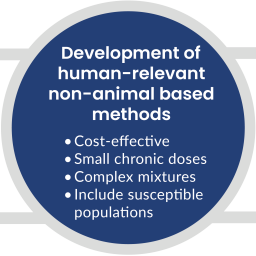Cardiotoxicity of chemicals: Current regulatory guidelines, knowledge gaps, and needs
Main Article Content
Article Details

This work is licensed under a Creative Commons Attribution 4.0 International License.
Articles are distributed under the terms of the Creative Commons Attribution 4.0 International license (http://creativecommons.org/licenses/by/4.0/), which permits unrestricted use, distribution and reproduction in any medium, provided the original work is appropriately cited (CC-BY). Copyright on any article in ALTEX is retained by the author(s).
Bopp, S. K., Kienzler, A., Richarz, A. N. et al. (2019). Regulatory assessment and risk management of chemical mixtures: Challenges and ways forward. Crit Rev Toxicol 49, 174-189. doi:10.1080/10408444.2019.1579169
Burnett, S. D., Blanchette, A. D., Chiu, W. A. et al. (2021). Cardiotoxicity hazard and risk characterization of ToxCast chemicals using human induced pluripotent stem cell-derived cardiomyocytes from multiple donors. Chem Res Toxicol 34, 2110-2124. doi:10.1021/acs.chemrestox.1c00203
Daley, M. C., Mende, U., Choi, B. R. et al. (2023). Beyond pharmaceuticals: Fit-for-purpose new approach methodologies for environmental cardiotoxicity testing. ALTEX 40, 103-116. doi:10.14573/altex.2109131
ECHA (2017). Guidance on the Biocidal Products Regulation: Volume III Human Health – Assessment & Evaluation (Parts B+C).
EU (2006). Regulation (EC) No 1907/2006 of the European Parliament and of the Council of 18 December 2006. https://eur-lex.europa.eu/LexUriServ/LexUriServ.do?uri=OJ:L:2007:136:0003:0280:en:pdf (accessed 01.09.2022)
EU (2009). Regulation (EC) No 1107/2009 of the European Parliament and of the Council of 21 October 2009. https://eur-lex.europa.eu/LexUriServ/LexUriServ.do?uri=OJ:L:2009:309:0001:0050:en:pdf (accessed 01.09.2022)
EU (2012). Regulation (EU) No 528/2012 of the European Parliament and of the Council of 22 May 2012. https://eur-lex.europa.eu/legal-content/en/txt/pdf/?uri=celex:32012R0528 (accessed 01.09.2022)
Kemikalieinspektionen (2021). PM 8/21: Improving the regulatory assessment of combination effects: Steps towards implementing the mixture assessment factor (MAF) in chemical regulation. https://bit.ly/3mqMidA (accessed 25.11.2022)
Krishna, S., Berridge, B. and Kleinstreuer, N. (2021). High-throughput screening to identify chemical cardiotoxic potential. Chem Res Toxicol 34, 566-583. doi:10.1021/acs.chemrestox.0c00382
OECD (2017). Chemical Safety Assessment Workflow Based on Exposure Considerations and Non-Animal Methods. Series on Testing and Assessment, No. 275. OECD Publishing, Paris. https://www.oecd.org/officialdocuments/publicdisplaydocumentpdf/?cote=env/jm/mono(2017)27&doclanguage=en
OECD (2022). OECD Test Guidelines for Chemicals. https://www.oecd.org/chemicalsafety/testing/oecdguidelinesforthetestingofchemicals.htm (accessed 05.07.2022)
Paparella, M., Colacci, A. and Jacobs, M. N. (2017). Uncertainties of testing methods: What do we (want to) know about carcinogenicity? ALTEX 34, 235-252. doi:10.14573/altex.1608281
Paparella, M., Bennekou, S. H. and Bal-Price, A. (2020). An analysis of the limitations and uncertainties of in vivo developmental neurotoxicity testing and assessment to identify the potential for alternative approaches. Reprod Toxicol 96, 327-336. doi:10.1016/j.reprotox.2020.08.002
WHO – World Health Organization (2018). Guidance Document on Evaluating and Expressing Uncertainty in Hazard Characterization The International Programme on Chemical Safety. https://www.who.int/publications/i/item/9789241513548


